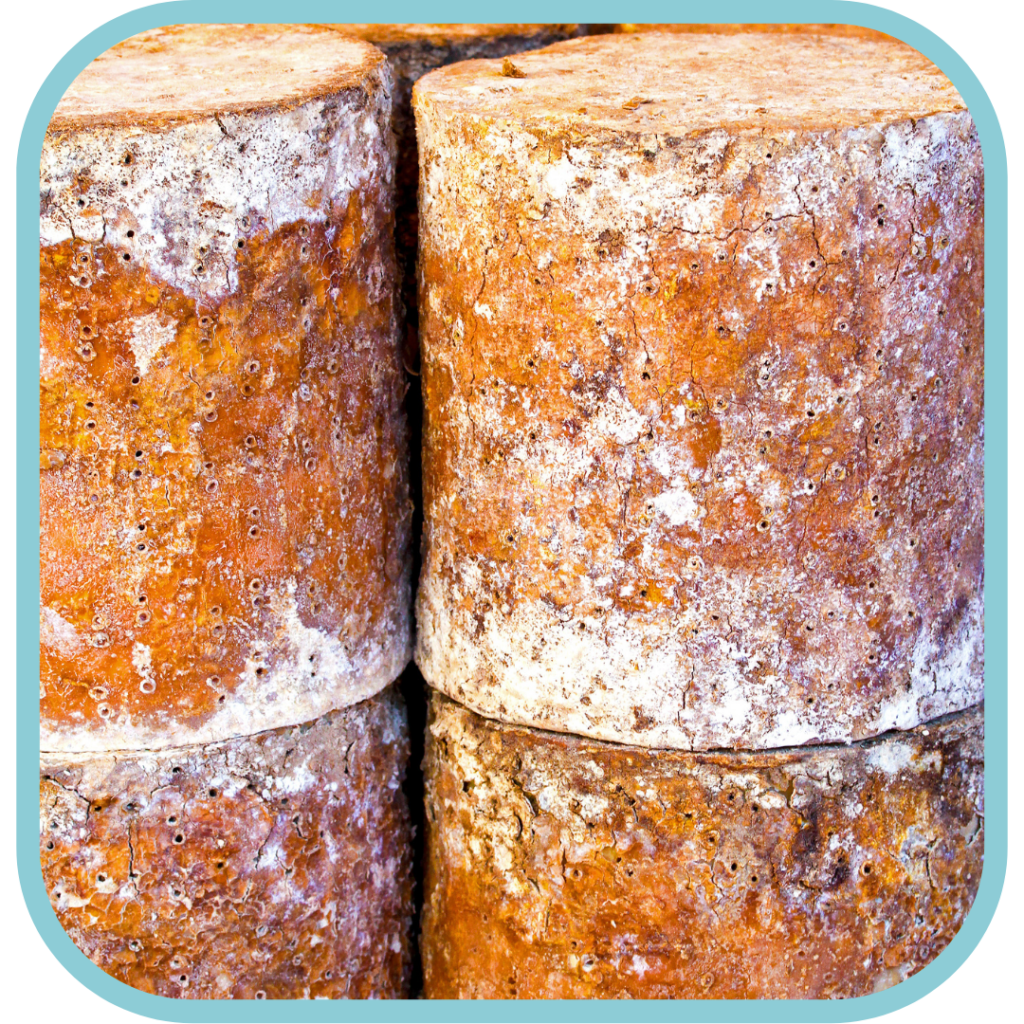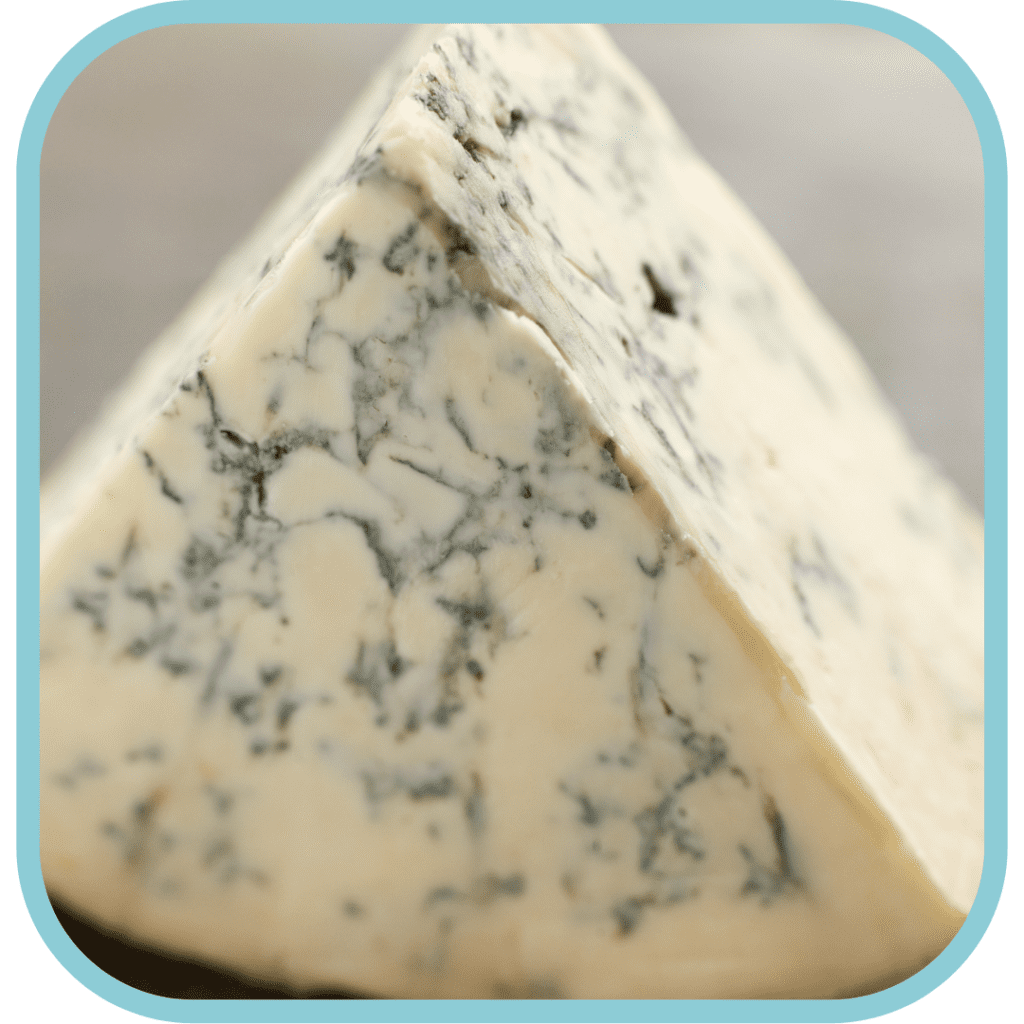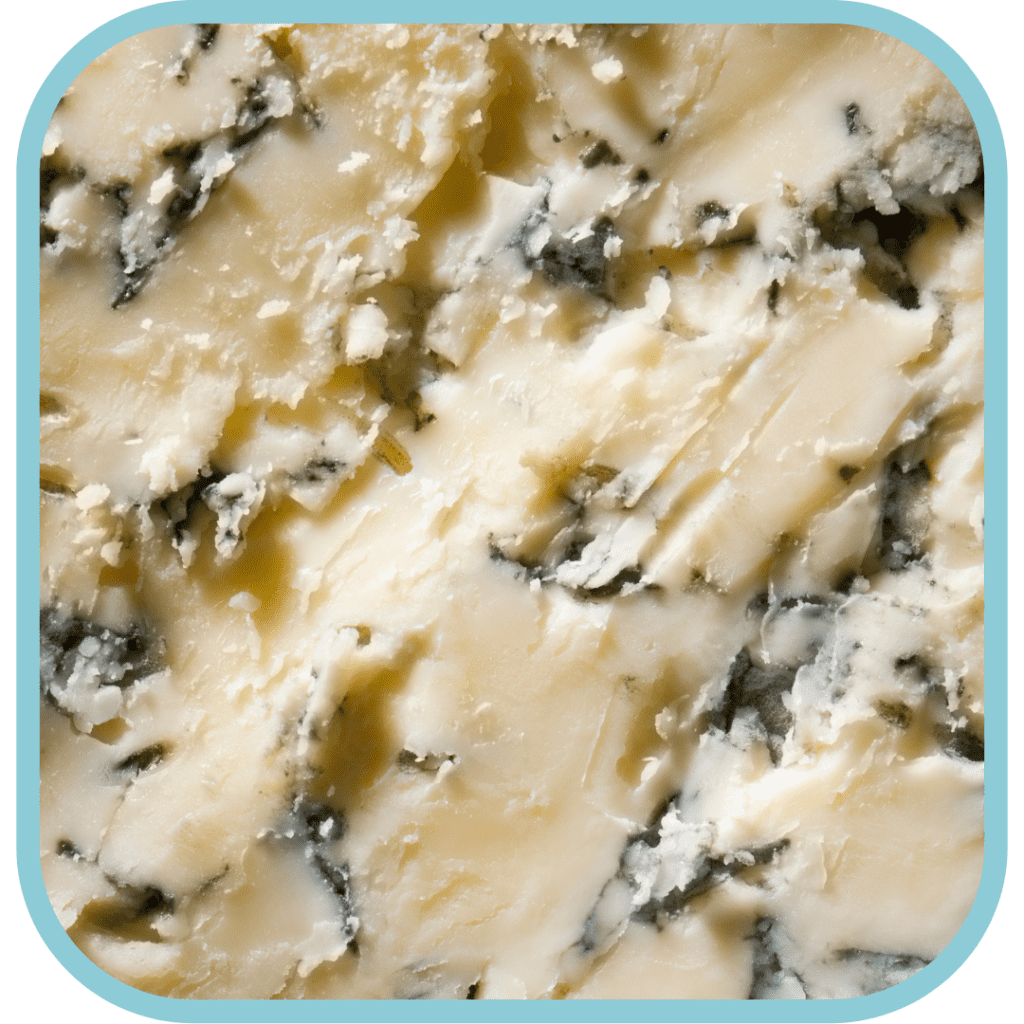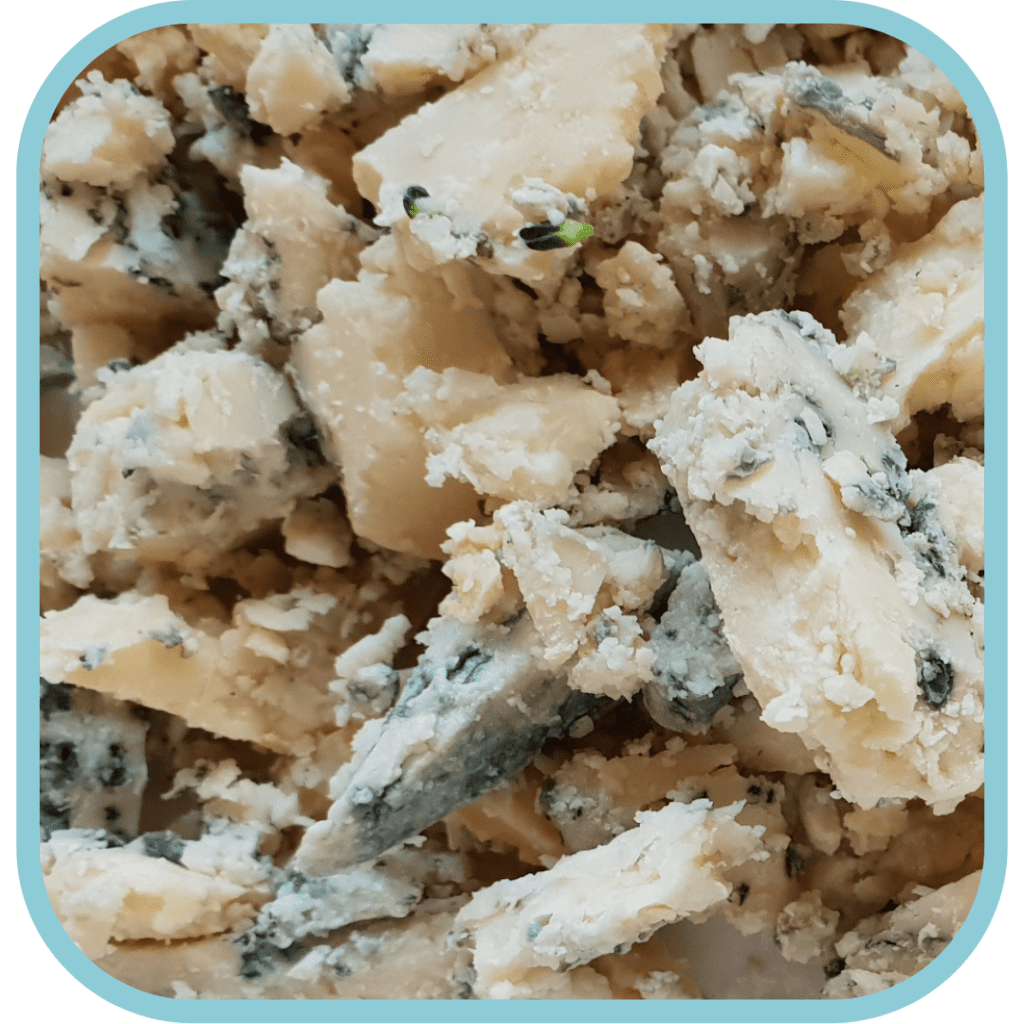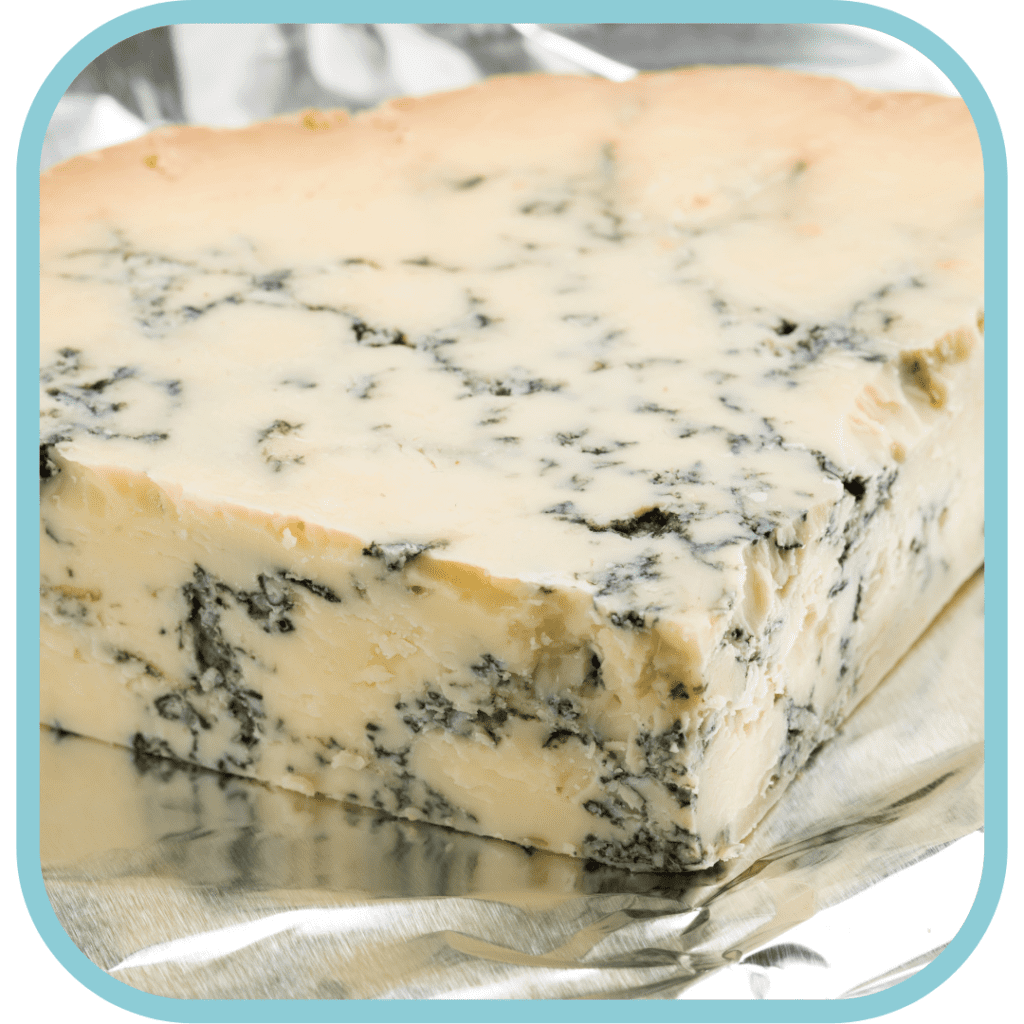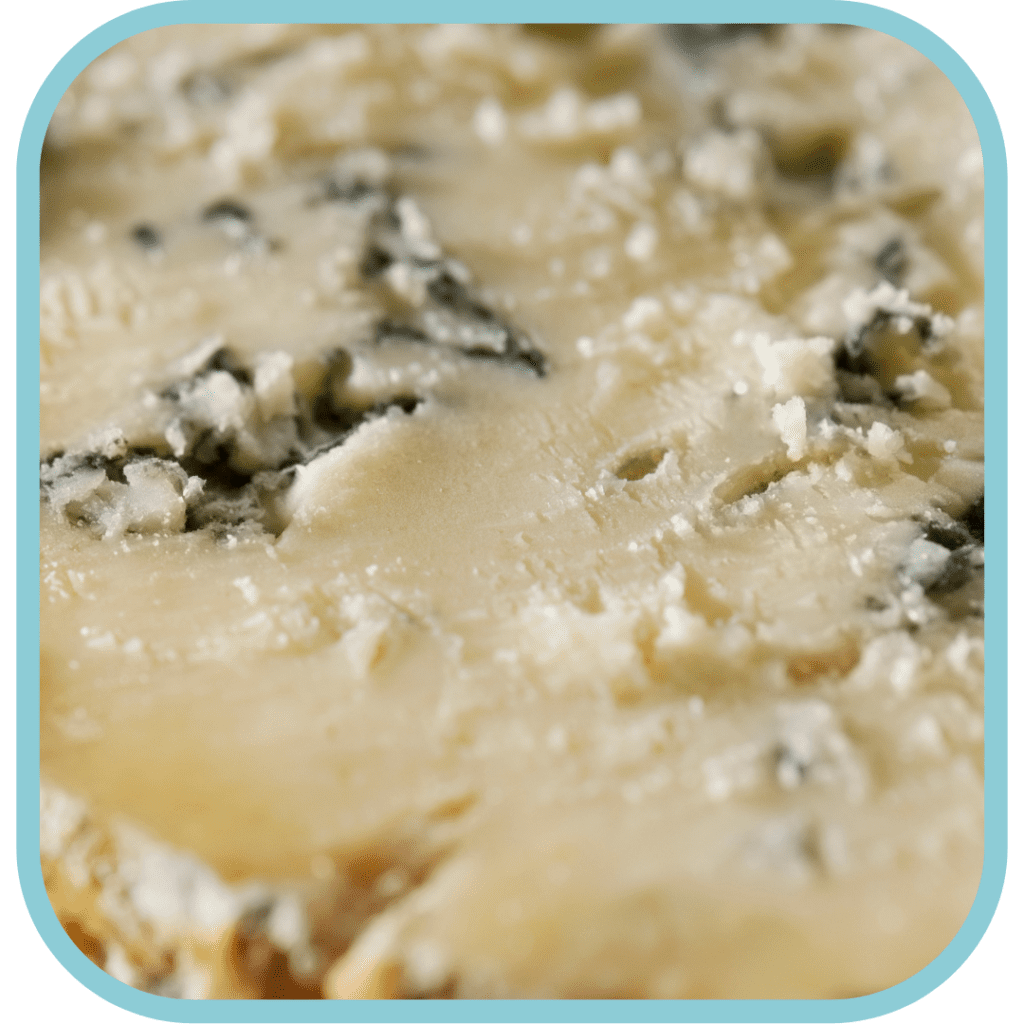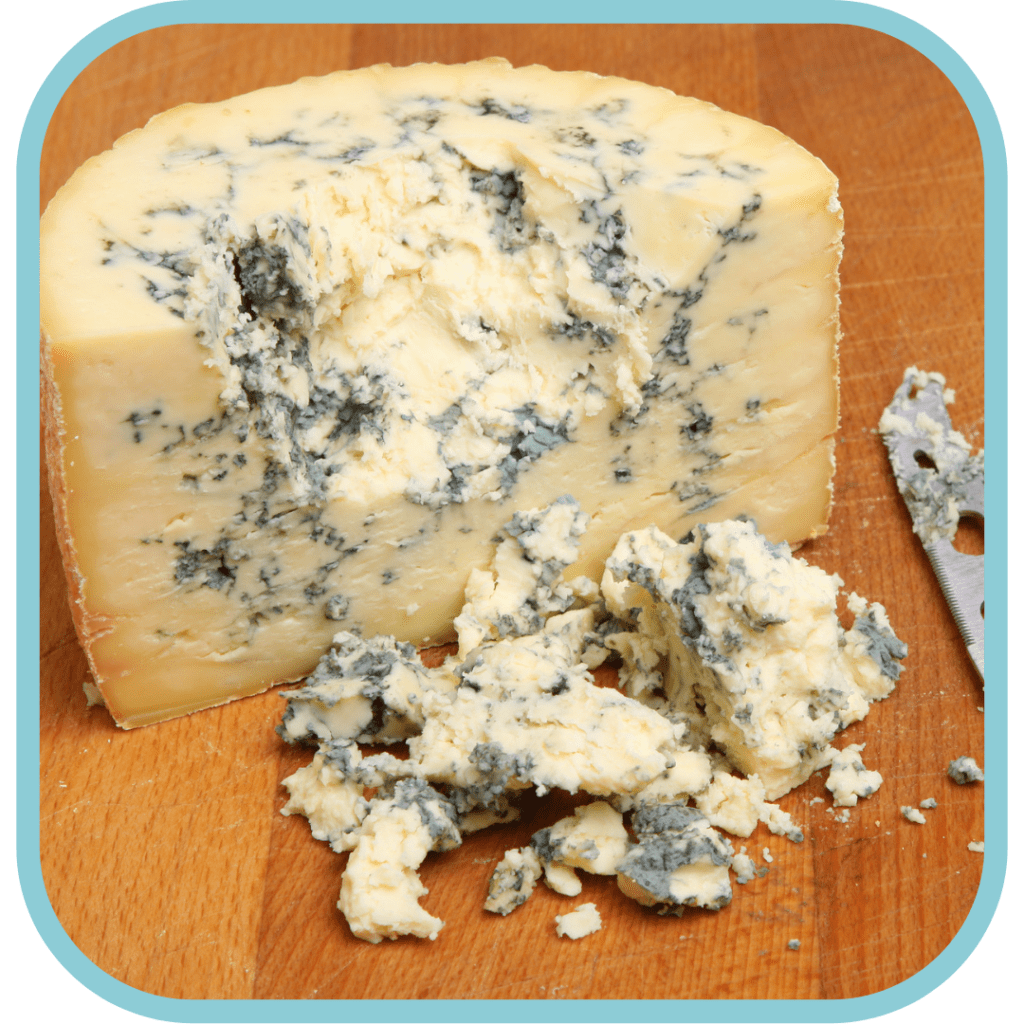What is Stilton
Stilton is a British blue mould cheese. Unusually for a blue cheese, it’s base is a moist hard hard cheese similar to Wensleydale rather than a soft cheese. White Stilton is a popular cheese in itself, often flavoured with fruits such mango.
Stilton is the most popular British blue cheese and is a staple of UK cheeseboards. It is a traditional Christmas cheese, pairing extremely well with Christmas cake.
Cheese Profile:
| Taste Profile | Tastes | Dairy Flavours | Other Flavours |
| Taste & Flavour | Moderate umami Moderate bitter Moderate salt Moderate acid Low sweet | Butter, Cream | Picante blue, Musty, Mushroom, Dried apricot, Horseradish, Biscuit, Malt |
| Mouthfeel | Initially firm but quickly gives way to a pasty crumble The rind is not eaten |
| Description | Drum shaped: around 7kg, 24cm high, 21cm in diameter Rind: White to Orange, rough and uneven. 1-2mm holes evident in the sides where the cheese has been needled. No holes in the top. Paste: varies from white and cruymbly (unripe) through ivory to yellow to greying and lighly brown when overripe. The blue starts light blue/green and darkens as it ages. |
The history is Stilton is contested with contradictory evidence and claims. Whatever its source, it can be confidently said to date from the 1720s.
Stilton has been protecting itself from imitation through the work of the Stilton Cheesemakers Association (SCA) since 1936. It was granted British trademark granted in 1966, the only British cheese to have achieved this, and the SCA have continued their defense of the cheese nationally and internationally ever since. It was awarded PDO status by the EU in 1996.
The town of Stilton (in Cambridgeshire), from where the cheese got its name, is not within the area of permitted production (Nottinghamshire, Leicestershire or Derbyshire) under the PDO rules. The SCA says a Stilton publican of the Bell Inn called Cooper Thornhill discovered the cheese when visiting Melton Mowbray. His coaching inn in Stilton was on the Great North Road to Newcastle and Scotland. It was from there the cheese went national. Alternatively some people of Stilton claim the cheese is naturally local to Stilton itself. The rumbling controversy adds to the spice of this great cheese.
What can be assured is white stilton falls into the family of Crumbly cheeses which includes the northern Wensleydale, Lancashire, and Cheshire and Welsh Caerphilly. These cheeses are crumbly in texture, high in acid and have sufficient moisture to support blue mould internally.
Needling
For the mold to breath and grow, the cheese must be needled. Stilton needling is form the sides of the drum, usually around 2 weeks after the Make.
This image shows how you can see the holes left by the needles long after the ripening begins.
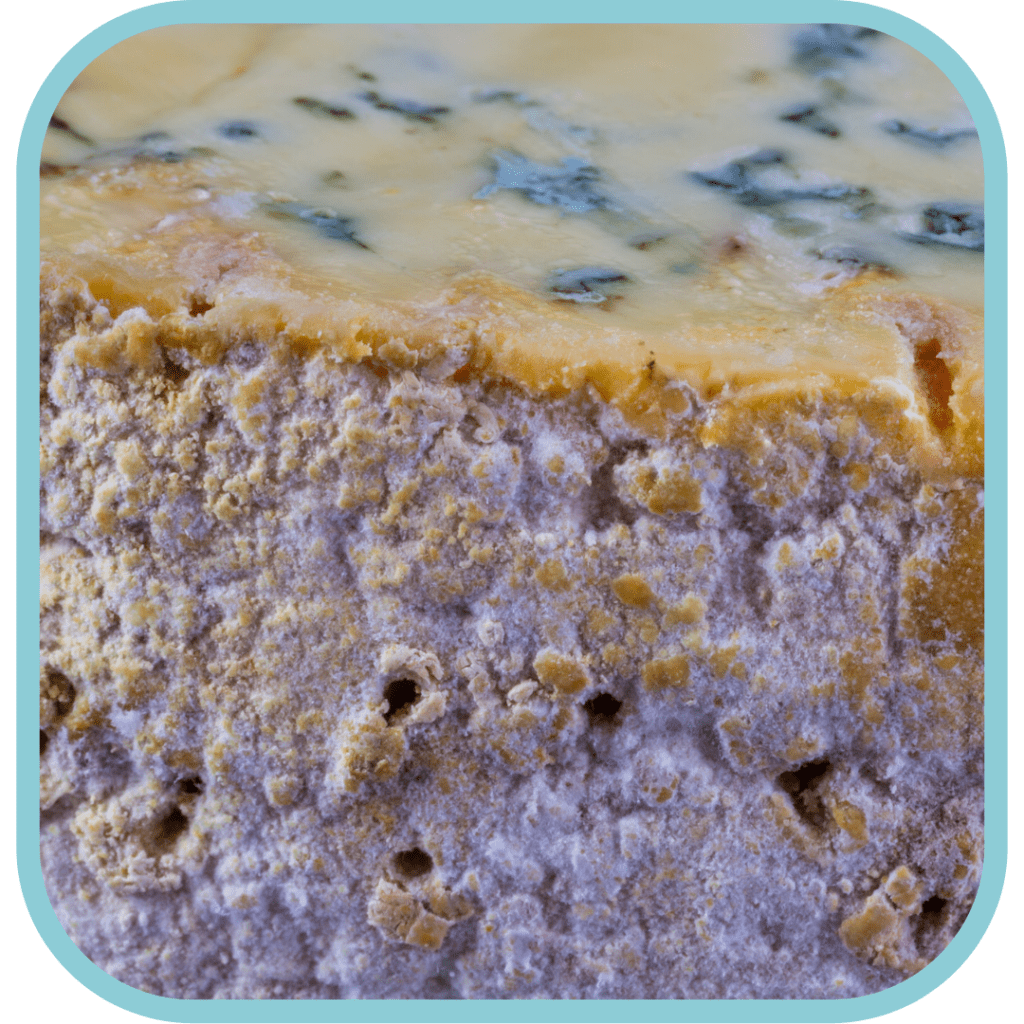
Ripening Stilton
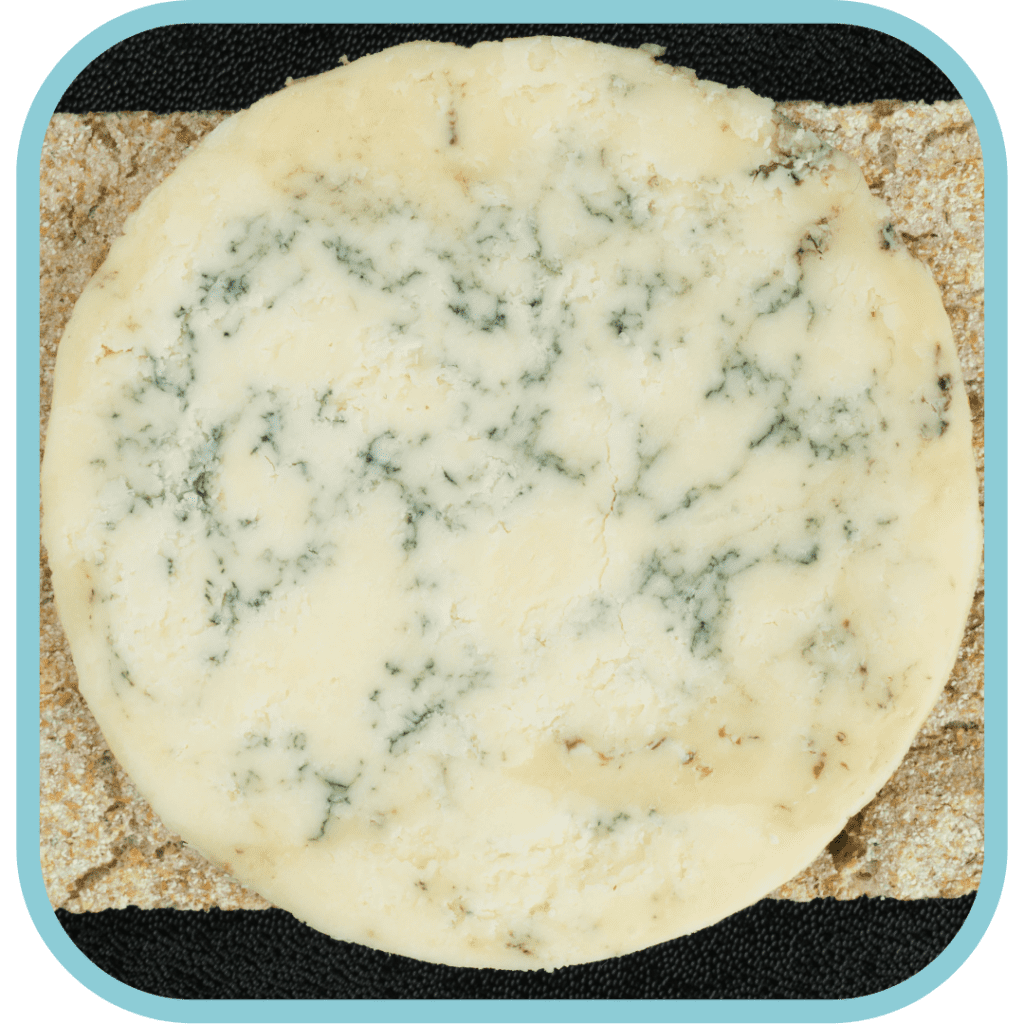
Unripe Stilton
The mould is turquisoe to aquamarine, and lightly distributed.
The paste remains pale and crumbly.
Ripe Stilton
The mould is widely distributed, and firmly colored blue to blue green.
The paste is all smooth across the cheese.
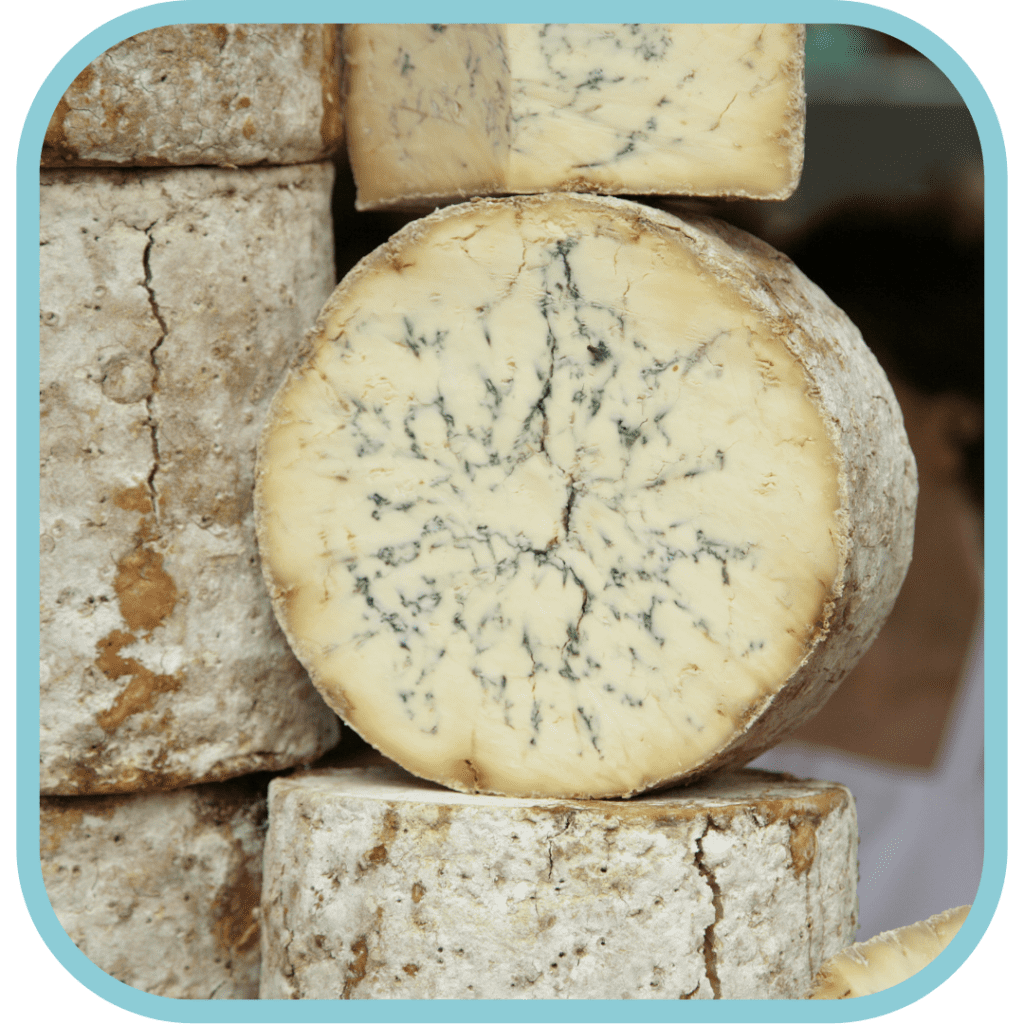
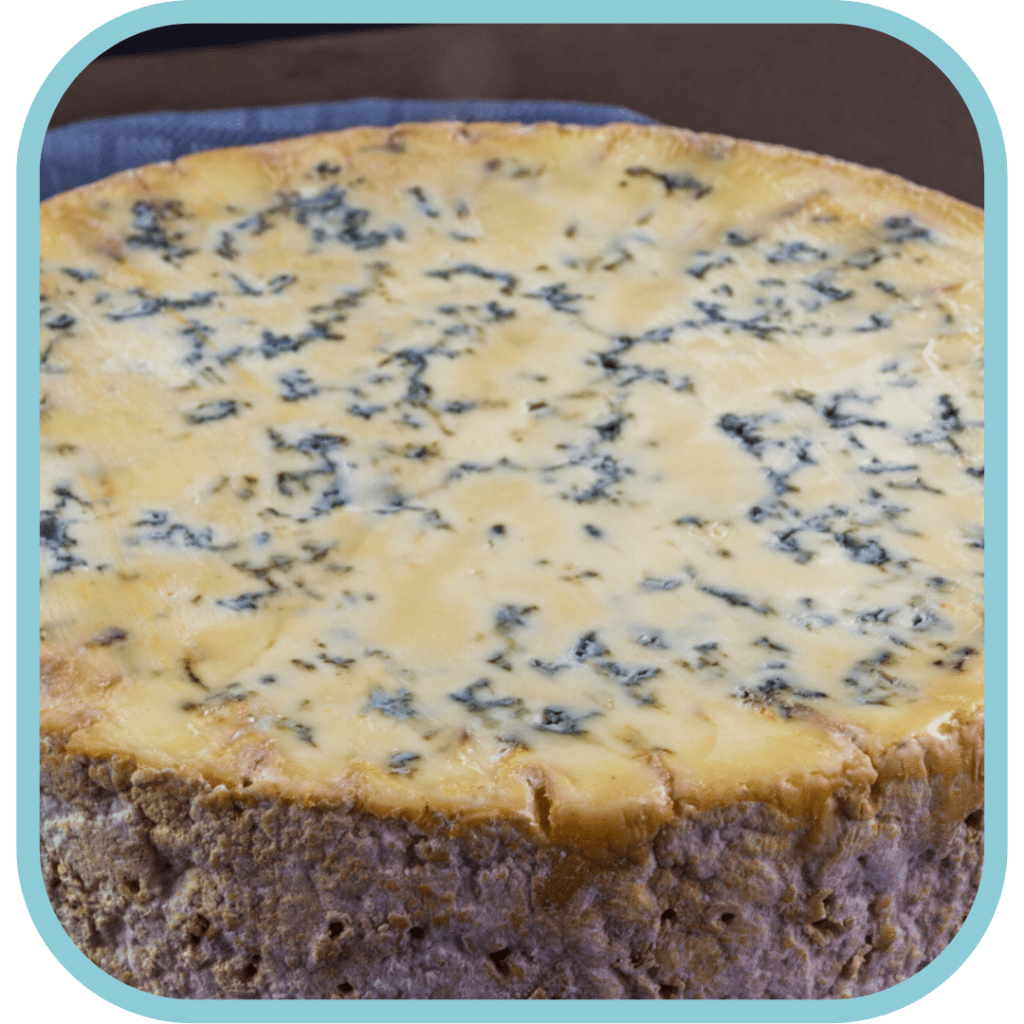
Over ripe Stilton
The blue has become dark in colour, forming pronounced lines and holes.
The paste has changed to yellow with brown tint.
The rind is incurring into the cheese, showing pronounced brownness to the curd, with cracks opening up, often starting form needling holes.
Packaging
Whole cheeses are wrapped in paper, but are too large for consumer use.
Prep-packed cheese are usually closely plastic wrapped.


